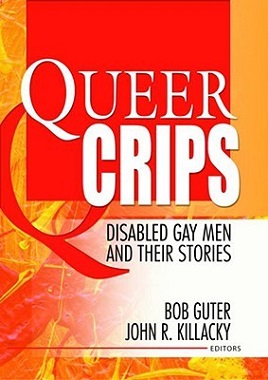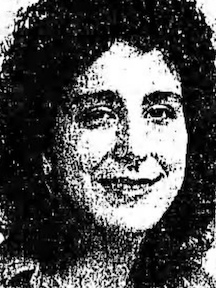
A cripple is a person or animal with a physical disability, particularly one who is unable to walk because of an injury or illness. The word was recorded as early as 950 AD, and derives from the Proto-Germanic krupilaz. The German and Dutch words Krüppel and kreupel are cognates.
Disability studies is an academic discipline that examines the meaning, nature, and consequences of disability. Initially, the field focused on the division between "impairment" and "disability", where impairment was an impairment of an individual's mind or body, while disability was considered a social construct. This premise gave rise to two distinct models of disability: the social and medical models of disability. In 1999 the social model was universally accepted as the model preferred by the field. However, in recent years, the division between the social and medical models has been challenged. Additionally, there has been an increased focus on interdisciplinary research. For example, recent investigations suggest using "cross-sectional markers of stratification" may help provide new insights on the non-random distribution of risk factors capable of exacerbating disablement processes. Such risk factors can be acute or chronic stressors, which can increase cumulative risk factors The decline of immune function with age and decrease of inter-personal relationships which can impact cognitive function with age.

In linguistics, reappropriation, reclamation, or resignification is the cultural process by which a group reclaims words or artifacts that were previously used in a way disparaging of that group. It is a specific form of a semantic change. Linguistic reclamation can have wider implications in the fields of discourse and has been described in terms of personal or sociopolitical empowerment.
Ableism is discrimination and social prejudice against people with physical or mental disabilities. Ableism characterizes people as they are defined by their disabilities and it also classifies disabled people as people who are inferior to non-disabled people. On this basis, people are assigned or denied certain perceived abilities, skills, or character orientations.
Uruguayan Sign Language, or Lengua de señas uruguaya (LSU), is the deaf sign language of Uruguay, used since 1910. It is not intelligible with neighboring languages, though it may have historical connections with Paraguayan Sign Language.
The representation of disability in children's literature is a matter of scholarly research, and has been a relevant subject particularly since the 1970s. However, disability representation is still a modern issue. A 2011 World Report on Disability conducted by the World Health Organization found that around 15% of the global population, 1 billion people, have a disability, yet in 2019 only 3.4% of children's books had disabled main characters. The quality of disability representation can vary depending on the specific disability portrayed. Even though society has included more diverse characters with disabilities, this representation must be handled with care to avoid promoting existing negative stereotypes.

Queer Crips: Disabled Gay Men and Their Stories is a 2004 anthology edited by Bob Guter and John R. Killacky. The book is a collection of personal stories from gay men with disabilities. The stories are told through a variety of literary genres, including poetry, prose, and interviews. The book won the 2004 Lambda Literary Award for the Anthologies/Non-fiction category. Contributors to the book include gay men such as Greg Walloch and Kenny Fries. Disability rights activist J. Quinn Brisben was also a contributor. After being turned down for publication by 30 publishers, the anthology was finally published by Harrington Park Press, an imprint of Haworth Press.
Leroy F. Moore Jr. is an African American writer, poet, and community activist. Moore was born November 2, 1967, in New York City. Moore is one of the founders of Krip Hop.
Disability studies in education (DSE) is a field of academic study concerned with education research and practice related to disability. DSE scholars promote an understanding of disability from a social model of disability perspective to "challenge social, medical, and psychological models of disability as they relate to education". A DSE perspective situates disability within social and political context and is concerned with the civil and human rights of students with disabilities, including issues of equity, access, and inclusion in educational settings, curricula, and activities.

Alison Piepmeier was an American scholar and feminist, known for her book Girl Zines: Making Media, Doing Feminism. She was director of Women's and Gender Studies and associate professor of English at the College of Charleston.
The intersection of disability and religion concerns the manner in which disabled people are treated within religious communities, the religious texts of those religions, or the general input from religious discourse on matters relating to disability. Studies on the relationship between religion and disability vary widely, with some postulating the existence of ableism and others viewing religion as a primary medium through which to assist disabled people. Religious exhortation often prompts adherents to treat people with disabilities with deference, however when the disability constitutes a mental illness such an approach may be slanted with an acknowledgement of the latter's naivete. In religions with an eschatological belief in divine judgment, there are often traditions promulgating an exemption from judgement in the afterlife for mentally disabled people, as well as for children who die before reaching maturity due to both lacking an understanding of their actions in a manner analogous to the insanity defense. Regarding the rationale behind God's creation of disabled people, some religions maintain that their contrast with the non-disabled permits the non-disabled to reflect and God to subsequently assess the level of gratitude shown by each individual for their health.
Anita Ghai is an Indian academic who was the former president of Indian Association of Women's Studies. She is currently a professor at School of Human Studies, Ambedkar University, Delhi since November 2015. She is also a disability rights activist in India working in the areas of sexuality, gender, health and education rights. She has authored three books.
Disability justice is a social justice movement which focuses on examining disability and ableism as they relate to other forms of oppression and identity such as race, class and gender. It was developed in 2005 by the Disability Justice Collective, a group including Patty Berne, Mia Mingus, Stacey Milbern, Leroy F. Moore Jr., and Eli Clare. In disability justice, disability is not considered to be defined in "white terms, or male terms, or straight terms." The movement also believes that ableism makes other forms of prejudice possible and that systems of oppression are intertwined. The disability justice framework is being applied to a intersectional reexamination of a wide range of disability, human rights, and justice movements.
Alison Kafer is an American academic specializing in feminist, queer, and disability theory. As of 2019, she is an associate professor of feminist studies at the University of Texas, Austin. She is the author of the book Feminist, Queer, Crip.
Eli Clare is an American writer, activist, educator, and speaker. His work focuses on queer, transgender, and disability issues. Clare was one of the first scholars to popularize the bodymind concept.

Susan Ruth Nussbaum was an American actress, author, playwright, and disability rights activist.

Horror films have frequently featured disability, dating to the genre's earliest origins in the 1930s. Various disabilities have been used in the genre to create or augment horror in audiences, which has attracted commentary from some critics and disability activists.
Disability and LGBT identity both can play significant roles in the life of an individual. Disability and sexuality can intersect in compounding ways, and, for many people, being both disabled and LGBT can result in double marginizalization. The two identities, either by themselves or in tandem, can complicate questions of discrimination and access to resources like accommodations, support groups, and elder care.
M. Remi Yergeau is an American academic in the fields of rhetoric and writing studies, digital studies, queer rhetoric, disability studies, and theories of mind. As of 2024, Yergeau is an Arthur F. Thurnau associate professor of Digital Studies and English at the University of Michigan.





